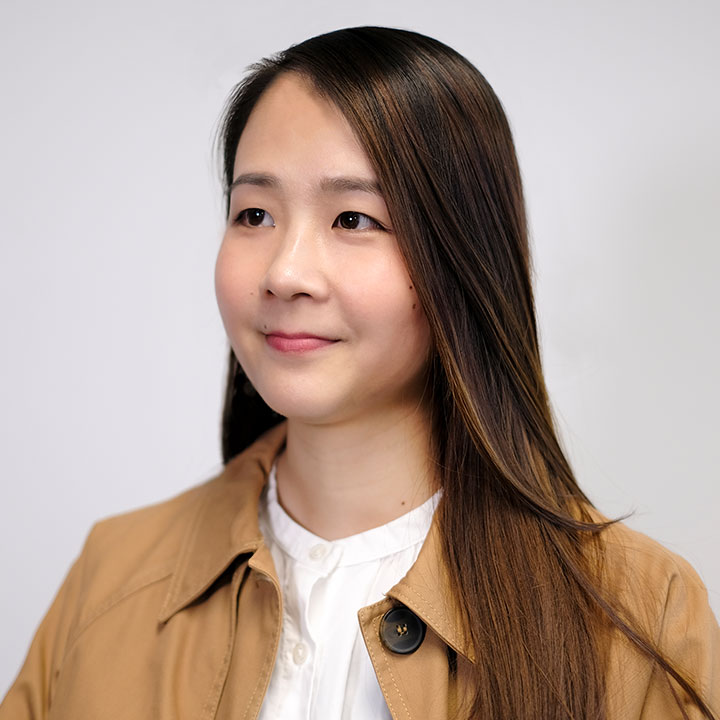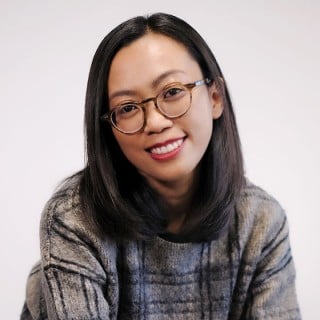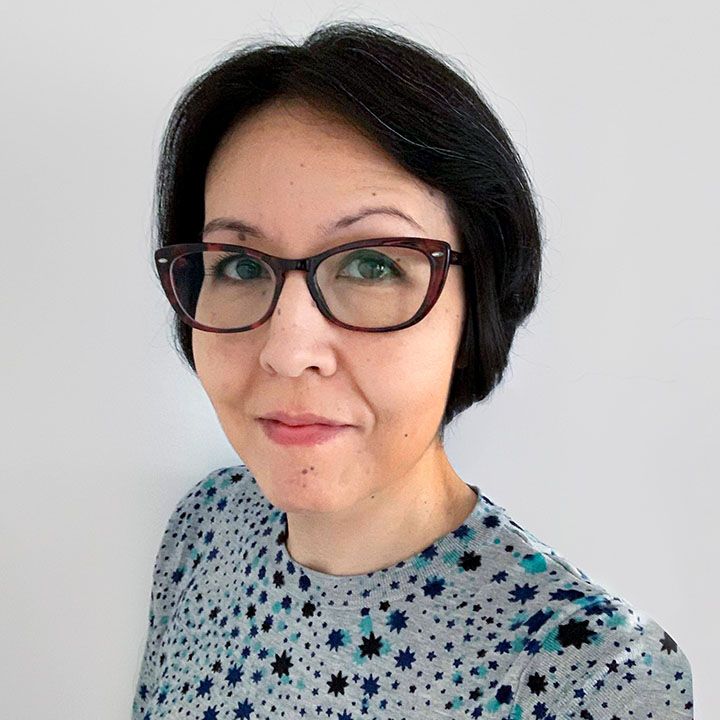How heroes emerge in real life
to solve the pressing problems of
How heroes emerge
in real life to solve
the pressing problems of
our planet
in real life to solve the pressing problems of




















As the world faces challenging times – from biodiversity loss and wildlife decline to healthcare obstacles in marginalised communities – several remarkable individuals are forging ahead, taking concrete action and rallying others to create meaningful solutions.
July 20, 2022
Many of us cannot help but be awestruck by fictional characters on a mission to save the world using superhuman powers. Case in point: movies that feature superheroes brought to life from comic books are consistently popular, drawing massive crowds and millions of dollars at the box office.
But the heroes stepping up to solve our planet’s problems also exist beyond the screen, walking among us in everyday life. They come in many forms – scientists, doctors, environmentalists, animal lovers, engineers – and live across the world. Their so-called “superpowers” originate from the discoveries that come from their explorations, hard-earned knowledge and skills, as well as their passion to use their abilities to help the world.
Meet some of these incredible – and very real – individuals, who have been named Rolex Awards for Enterprise Laureates for dedicating their lives to protecting our planet today and for generations to come.



Cuéllar
The Gran Chaco, a tropical dry forest spanning four countries in South America, is under increasing threat from deforestation and large-scale farming. The population of the guanaco – the wild ancestor of the llama that once thrived in the area – has plunged amid these conditions, and also due to hunting.
In 1996, conservation biologist Erika Cuéllar stepped in to train villagers and indigenous people in this region covering parts of Bolivia, Argentina, Paraguay and Brazil, via an 800-hour, nine-month parabiologist course that teaches them how to help protect the forest. “I believe that long-term conservation is possible only through the real involvement of local people,” says Cuéllar, 50.
Real involvement means investing in a long-term structure for continuous research, monitoring the sustainable use of resources, and ensuring local people benefit from the whole process.



Working together, Cuéllar and what she calls the “army of local people” have succeeded in saving the guanaco from its endangered status. “The guanaco is important to me, because it is part of a natural system and valuable in the local culture of South America,” says Cuéllar, who is currently adapting the work she did in the Gran Chaco to the desert of Oman – yet another dry region that has been overlooked.
Getting recognised as a Rolex Awards for Enterprise Laureate in 2012 proved to be a significant milestone for Cuéllar and her work. “It enabled me to show the Gran Chaco to the world as I always wanted other people to see it,” she says.













Häussermann
When biologist and marine explorer Vreni Häussermann, 51, first saw the Patagonia region’s southern fjords in Chile in 1997, she became fascinated by the area and vowed to help protect it. “It is a place where the mountains meet the ocean, and I love both. Its diverse underwater environment is also the most beautiful – and at the same time, the least known.”
Although the success of her mission is difficult to measure quantitatively, Häussermann has nevertheless seen positive results. “Before our expeditions, people thought of the fjord region as a boring, hostile place – poor in biodiversity. With our discoveries, the image people had of Patagonia changed,” she says. “Over the next two decades, the effort that NGOs spent on getting marine-protected areas in Patagonia increased significantly.”



Over the years, Häussermann and her collaborators have discovered more than 100 new marine species in the ecosystem there. Her ultimate goal is to help the Chilean government, scientists and NGOs understand the uniqueness of the marine life in Chilean Patagonia, as well as the fact that it needs to be protected.
If we do not stop climate change and biodiversity loss now, our children will live in a world that is very different, much less diverse and much more hostile than the world we knew.
Häussermann is grateful for the opportunities resulting from the Rolex Awards for Enterprise. “The award helped me to bring this forgotten part of the world into the spotlight of marine conservation efforts and boost my studies,” says the 2016 Laureate.










 Here in Hong Kong
Here in Hong Kong


I am working on a project to document the biodiversity which we find in and around Hong Kong’s oyster reefs. Reef-building oysters were historically the main structural and ecological component in Hong Kong’s waters, and communities have relied on services from oyster reefs for generations. However, Hong Kong’s shorelines have been heavily transformed, with massive losses of these natural coastal habitats.
An aspect of Häussermann’s work which I really admire is not only her dedication to science, but sharing her discoveries with the world through writing, film or blogging. I, too, share my work and try to encourage others to fall in love with the natural world, whether that is through my own social media or direct outreach work with my team.














Nsengimana
Early on in his career as a veterinarian and conservationist in Rwanda, Olivier Nsengimana noticed that many grey crowned cranes were being kept in captivity in the private gardens of the country’s affluent residents. Valued as symbols of long life and wealth, the birds were being poached in the wild to become living ornaments. Thousands were injured or died in the process, and the grey crowned crane population dropped 80 per cent globally. Nsengimana, 37, recognised that he had to do something quickly to help save the species.
As of 2021, his actions focusing on public awareness and conservation have resulted in 253 cranes being removed from captivity, with 166 of them reintroduced to the wild. “The plan has been successful because we have targeted the problem from many angles, and involved all Rwandans in our activities,” Nsengimana says. “Our organisation is also run by Rwandans who come from and understand the challenges faced by communities.”



His biggest challenge now is ensuring the cranes have a habitat in the wild. “Rwanda is a small country with an incredible variety of biodiversity, yet its high population density and extreme poverty meant that resources and land are overstretched, resulting in high competition between people and wildlife,” he explains, clearly undeterred.
We have inspired thousands of children who will grow up as the next generation of conservationists, and seeing the difference we can make together inspires me to keep going and shows me that anything is possible.
Without the Rolex Awards for Enterprise, none of this would have been possible, says Nsengimana, a 2014 Laureate. “Rolex saw the potential of the project and believed in me enough, allowing it to get off the ground – with tangible things to show for – so we could continue the work.”














Diagne
Originally a mere pet lover with a particular fondness for turtles and tortoises, Tomas Diagne, 51, is now a pioneering conservationist who has done so much for the species that the people in his native Senegal dubbed him the “father of African turtles”. It all began in 1993, when Diagne’s mother showed him a magazine article about a French biologist, Bernard Devaux, who was working to protect the endangered Hermann’s tortoise that is native to France. Diagne was inspired to get in touch with the biologist – and a new life path opened up.
The teachings he received from Devaux led Diagne to set up the Village des Tortues in Noflaye, Senegal, in the mid-1990s, creating a haven where turtles, tortoises and terrapins are bred for release into the wild – and where humans can learn more about them.
Care is so important before any conservation action can be implemented successfully. People are really only going to conserve or protect animals they feel a strong connection with or love.



About 18,000 people visit the Village des Tortues annually, to interact with and learn about Senegalese turtles and tortoises. Diagne says: “My ultimate goal is to build the African Chelonian Institute’s permanent facility and education hub in Ngazobil, Senegal, and make it sustainable. It will be a breeding facility for Africa’s rarest turtles, a sea turtle rescue centre, a library and archival collection of specimens for scholars, and a place to mentor the next generation of African turtle conservationists.”
Being selected as a Rolex Awards for Enterprise Laureate in 1998 gave Diagne the motivation he needed to press on with his efforts. He says: “The award gave me the confidence that I was going in the right direction and to tackle more challenges.”













Bastawrous
About 1 billion people across the world suffer from readily treatable eyesight problems, with at least a third of them living in places where modern optical treatments are not accessible. British ophthalmologist Andrew Bastawrous knew he wanted to do something about this issue following work assignments in several African and Asian countries that he had embarked on after qualifying as an eye surgeon in the UK.
No matter how hard we worked, there were always still queues of people waiting to be treated at the end of the day. I’d be deeply frustrated that so many people were unable to get the treatment they needed.



In 2011, he moved to Kenya with his young family to complete his PhD and set up 100 temporary eye clinics. “In many of the locations we visited, there was no electricity, running water or roads, but a perfect phone signal,” Bastawrous says. “Despite the incredible dedication of the local eye health workers, there were simply too few of them to treat all of the people who were losing their sight.”
Bastawrous and his team began looking into ways to resolve this and eventually developed Peek Acuity, a smartphone-based app used to test people’s eyesight and identify treatable optical problems. Since November 2018, 679,671 people have been screened, and 123,184 people have been connected to care in eye health programmes powered by Peek.
But Bastawrous considers his work to be far from over. “In the next three years, we want to get to the stage where we are working with our partners to reach over 100,000 people every week,” he says. “We are really excited to continue ensuring vision and eye health for all can become a reality.”
He notes that the Rolex Awards for Enterprise were “instrumental” to his organisation’s success. “The financial support from Rolex gave us a significant step up just when we needed it. But receiving the award has meant so much more than that,” says the 2016 Laureate. “The association with a prestigious organisation like Rolex has helped enhance our credibility.”










 Here in Hong Kong
Here in Hong Kong


At HandsOn Hong Kong, we believe that every person has the power to make a positive difference, no matter how big or small. By running thousands of service activities that empower people to volunteer, what we’re really doing is giving everyone the chance to show up for one another and engage in productive ways that build resilient communities.
Some of these Laureates leverage technology to address issues in the community. At HandsOn Hong Kong, we have also leveraged tech for good. People are at the heart of our work – developing and running programmes – but technology is what enables us to deliver our services on scale across the city every day.










In rural and low-income areas of Pakistan, one out of every two people cannot get basic healthcare. Meanwhile, in its cities, thousands of qualified female doctors are staying at home, unable to practise their vocation after marriage – the result of the country’s so-called “doctor bride” phenomenon. Doctor Sara Saeed, 35, co-founded Sehat Kahani to address both issues in her country by offering a service that connects home-based female doctors with underserved communities via an electronic health network.
“I felt the pain of a woman who gives 23 years of her life living a dream – a dream to provide service to those in need – only to end up having to choose between her career and her family,” says Saeed, explaining how her own personal experience motivated her to start the programme.



Today, Sehat Kahani, which means “story of health” in the Urdu language, has emerged as one of the leading digital health players in Pakistan. It boasts a network of 37 e-clinics across all four of the country’s provinces, and it is also Pakistan’s largest provider of corporate telemedicine care, serving more than 350 companies to cover 3.2 million people. Its consumer app has over 900,000 users, and its network of 7,000 doctors has conducted more than 950,000 consultations thus far.
With female doctors as the strength of our medical workforce, I sincerely believe that telemedicine can bridge the doctor-patient supply-demand gap in Pakistan, providing everyone with a chance to have affordable, equitable healthcare.
She says becoming a Rolex Award for Enterprise Laureate in 2019 has helped her cause immensely. “Every young entrepreneur – especially a female entrepreneur – requires support that champions her cause and celebrates her success, but also supports her failures,” Saeed says. “The Rolex team has been there with me through thick and thin.”
This article is part of a two-episode series, Guardians of the future, which highlights the efforts of Rolex Awards for Enterprise Laureates who are working to create a better, more sustainable world.
















